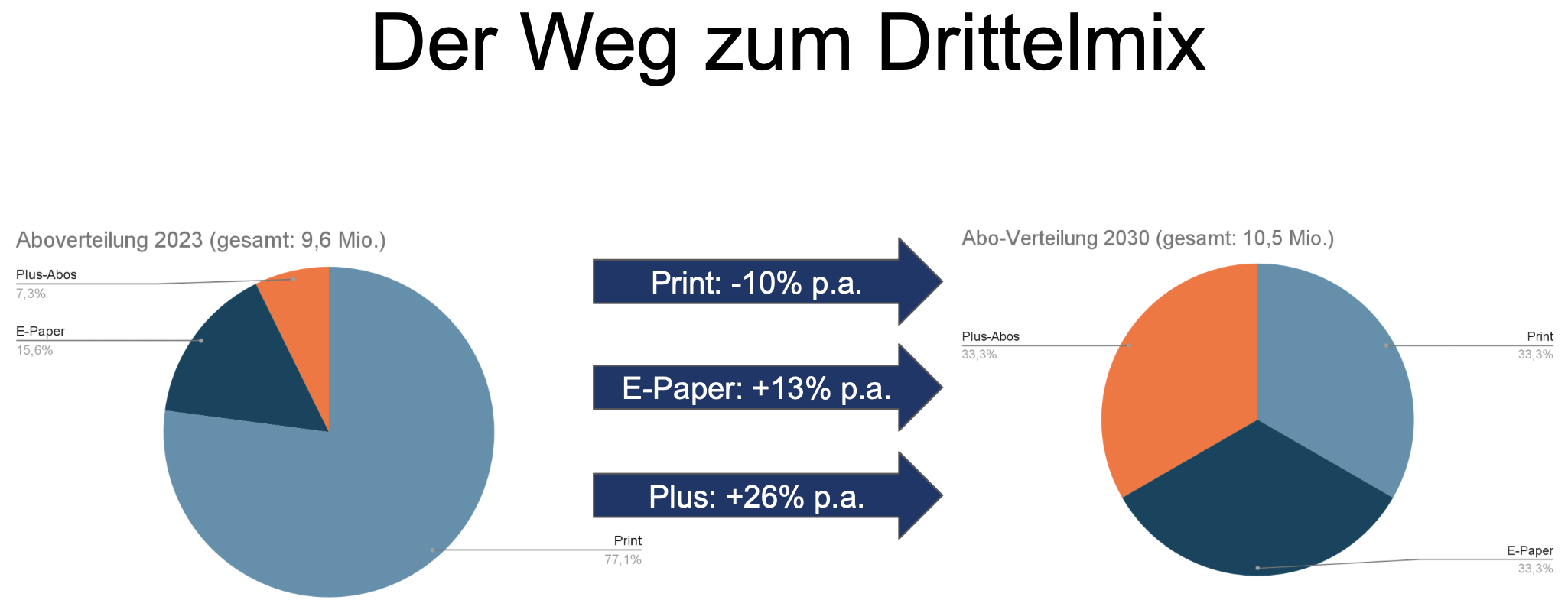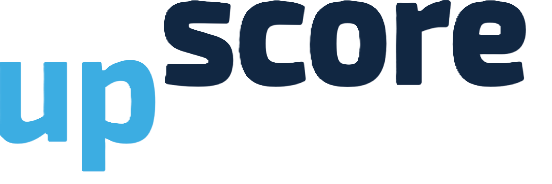Why Growth in Paid Content Is So Important – and Achievable – for Publishers!

When I’m asked for a simple strategic formula for regional publishers, my answer is: You need a one-third mix of print, e-paper, and digital subscriptions ("Plus") in the long run. But where does this idea come from – and what does it actually mean in terms of numbers?
Let’s start with print. According to the BDZV (Germany's Federal Association of Digital Publishers and Newspaper Publishers), regional subscription newspapers reached a print circulation of 7.4 million copies in Q2 2023 – a decrease of 9 percent compared to the previous year. One key factor behind this negative trend is the tough economic environment and growing price sensitivity. However, I believe this factor has become negligible. Anyone still reading print today is a print fan, with a deeply rooted daily ritual. For many, subscription cost is secondary.
“It’s not worth fighting print losses”
The bulk of subscription losses is likely due to natural attrition – i.e. deaths. Estimates suggest that well over a third of subscribers are now over 80 years old. This is not an immediate red flag. Someone who is exactly 80 still has a statistical life expectancy of 7.97 more years (men) or 9.49 years (women)(Source: https://www.aba-online.de/restlebenserwartung-ab-65). Losses from this age group will therefore stretch out over years, but overall contribute to an accelerating decline.
Let’s assume that regional publishers lose an average of 10 percent of their print circulation per year over the next seven years. That would leave the industry with a total circulation of 3.5 million. My firm belief: It’s not worth trying to fight that.
Now to e-papers. Regional publishers sold 1.5 million e-paper subscriptions in Q2 2023 – a 9.3 percent increase year-over-year. This growth is impressive, but not enough to reach 3.5 million subscriptions in seven years. At the current rate, we’d only hit 2.7 million. Achieving the 3.5 million mark would require annual growth of 13 percent.
More content in the e-paper than in print? Absolutely!
So what needs to be done? One option is to target those who cancel their print subscriptions due to cost – since e-papers are, on average, 31 percent cheaper. And the e-paper experience itself must be made more attractive. It already offers many advantages (digital, flexible, reliable delivery, accessible beyond one’s home, often available the evening before, etc.). But it also has disadvantages. For example, it's harder to share with family and friends – something that’s normal with a printed paper and often a key part of its appeal.
And here's a no-brainer: There’s no reason why the e-paper shouldn’t offer more content than the printed edition – if only we could get past the outdated notion that a more expensive print product must never feel like it offers “less.”

Finally, let’s talk about digital-only (“Plus”) subscriptions. Unfortunately, there’s no comprehensive figure available for all local and regional publishers. My estimate – excluding free trials and day passes – is around 700,000 (and I’d gladly welcome a more precise or well-justified alternative estimate!). To reach 3.5 million by 2030, we’d need an annual growth rate of 26 percent.**
Plus subscriptions: often the unloved bargain-bin product
Impossible, given the current near-stagnation? Not at all. This isn’t about a market that’s already tapped out. Many regional news offerings achieve strong reach, but that reach is still mostly driven by non-subscribers. So the interest is there – what’s needed now is to convert that interest into willingness to pay.
But how much potential is there, really, for Plus subscriptions?
Here’s my rule of thumb: Take the number of people in your distribution area and divide by 30. For example, a market of 1 million people would suggest potential for about 33,000 subscriptions. For every regional offering I’ve seen the actual numbers for, the real subscriber base is well below what this formula would indicate. In short: there’s a lot of untapped potential.
The bigger issue is a lack of strategic focus on actually unlocking that potential – including accepting some level of print cannibalization – and on engaging new audiences with local journalism.
Too often, Plus subscriptions are treated like the unloved budget option that undercuts the premium print product. But in reality, Plus is the true lever for the local and regional news industry – the key to pushing total paid circulation back up to more than 10 million in the medium to long term. That may be far below the 18 million of 1995, but it would still be enough to remain both journalistically relevant and economically sustainable.
Joachim Dreykluft is Head of Data & AI Strategy at Upscore

